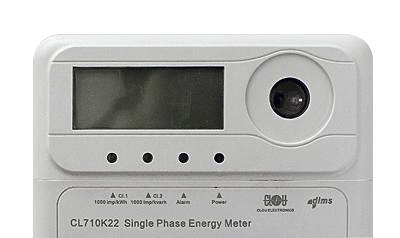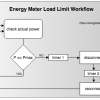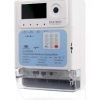The ability to sound an alert is a feature of electronic energy meters, particularly those having STS payment capabilities. A typical example is having low credit. This alarm is signaled by a flashing LED and may also include an audio sound, sometimes known as a buzzer or beep.

I've got the question: Who is going to pay for this additional power consumption?
What is the additional consumption?
For the LED we consider an average of 0.044 VA (2.2 V * 20 mA). If the whole consumption is active, the consumption is one unit per 5 years for a permanent flashing diode. Together with a permanent beep we have about 2 years per unit.
The beep switches by default off after 3 minutes or when a button on the keypad is pressed. The alarm diode is also only ON as long as the alarm situation exists. So in my humbled opinion it's less than one unit for the meter lifetime.
Who is charged for the additional consumption?
The power supply for the alarm diode and the buzzer is coming from the internal power supply in the meter. The same power supply also delivers the power for the display and the microcontroller unit (MCU).
By IEC 62052-11 Ed.2 the maximum power consumption in the voltage circuit is specified with 2 W or 10 VA. The actual consumption is at least for CLOU energy meters much lower.
Nevertheless, whatever self-consumption a meter has in the voltage circuit is covered by the utility. It is not deducted from the end-customer credit.
For the utility it's part of their technical losses for providing power.
Thank you for reading. You can leave a message after the beep (if any) or drop a comment.
Editor's note: This article was originally published in October 2020 and has been updated for comprehensiveness.





All comments are moderated before being published. Inappropriate or off-topic comments may not be approved.